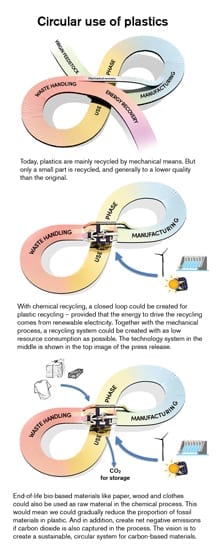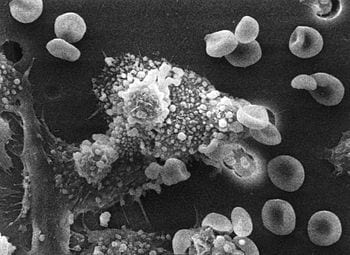
LMU researchers have developed a new process which will greatly simplify the process of sorting plastics in recycling plants. The method enables automated identification of polymers, facilitating rapid separation of plastics for re-use.
A team of researchers led by Professor Heinz Langhals of LMU’s Department of Chemistry has taken a significant step which promises to markedly expedite the recycling of plastic waste. They have developed a technique which provides for automated recognition of their polymer constituents, thus improving the efficiency of recycling and re-use of the various types of plastic. The technique takes advantage of the polymer-specific nature of the intrinsic fluorescence induced by photoexcitation. “Plastics emit fluorescent light when exposed to a brief flash of light, and the emission decays with time in a distinctive pattern. Thus, their fluorescence lifetimes are highly characteristic for the different types of polymers, and can serve as an identifying fingerprint,” Langhals explains. Details of the new method appear in the latest issue of the journal “Green and Sustainable Chemistry”.
The new technique, which is the subject of a patent application, involves exposing particles of plastic to a brief flash of light which causes the material to fluoresce. Photoelectric sensors then measure the intensity of the light emitted in response to the inducing photoexcitation to determine the dynamics of its decay. Because the different polymer materials used in the manufacture of plastics display specific fluorescence lifetimes, the form of the decay curve can be used to identify their chemical nature. “With this process, errors in measurement are practically ruled out; for any given material, one will always obtain the same value for the fluorescence half-life, just as in the case of radioactive decay,” says Langhals.
The Latest on: Recycling plastics
[google_news title=”” keyword=”Recycling plastics” num_posts=”10″ blurb_length=”0″ show_thumb=”left”]
via Google News
The Latest on: Recycling plastics
- Don’t pollute Colorado communities with plastics-to-fuelon April 28, 2024 at 3:30 am
Plastic waste is found on the most remote mountains, in the deepest ocean trenches, in our food, our water, and our bodies. It has an enormous climate impact, most of it cannot be recycled and ...
- A Giant Plastics Chemical Recycling Plant Planned for Pennsylvania Died After Two Years. What Happened?on April 26, 2024 at 2:05 am
Encina said it’s reviewing new, bigger locations overseas, and chasing growing demand. Critics see multiple fatal flaws with its plans.
- SABIC makes strides in recycling used medical plasticon April 25, 2024 at 5:31 pm
A proof-of-concept pilot project was conducted in collaboration with the dialysis department at Jessa Hospital in Belgium.
- Kickstart: Have the time of your life recycling with Plastic Swayzeon April 25, 2024 at 4:45 am
Would you recycle more if you knew you were turning over your HDPE bottles to Plastic Swayze? Would Cans Solo shred first? And you just know Dolly Carton is out there sorting nine to five.
- Let's not trash recycling technologies that could end plastic wasteon April 25, 2024 at 4:31 am
Some environmental campaigners claim that attempts to create a circular economy for plastics are doomed to fail – but the arguments can be disingenuous ...
- Plastic bags from Walmart US recycling bins tracked to controversial plastic facilities in Southeast Asiaon April 24, 2024 at 4:30 am
An ABC News investigation tracked plastic bags from Walmart US recycling bins to controversial plastic facilities in Southeast Asia.
- Dow CEO on Plastics Treaty: Governments Must Mandate Recyclingon April 22, 2024 at 10:44 am
Jim Fitterling, Dow's chairman and CEO, is calling for recycling mandates and better waste management infrastructure at UN meeting in Ottawa, Canada this week.
- You Might Be Recycling Your Plastics the Wrong Way. What to Knowon April 22, 2024 at 8:30 am
Use reusable straws instead of plastic straws. Avoid using plastic utensils unless they can be washed and reused. Recycle plastic bags, see if your local grocery store or recycling center will take ...
- Some researchers say plastic recycling is a 'fraud' — What do we do now?on April 22, 2024 at 7:00 am
Only about five percent of plastics produced annually are recycled in the U.S. So how much plastic is five percent? And will recycling that amount make a difference?
- Recycling carbon fiber reinforced plastics waste is a challenge, but researchers find a way to make it workon April 18, 2024 at 12:30 pm
Carbon fiber reinforced plastics (CFRP) are lighter and stronger than metal and are used in a variety of industries, including aviation, aerospace, automotive, marine, and sporting goods. In recent ...
via Bing News










